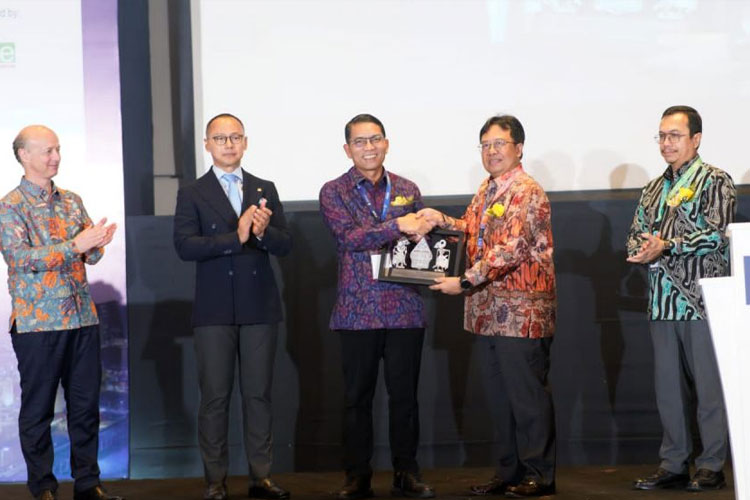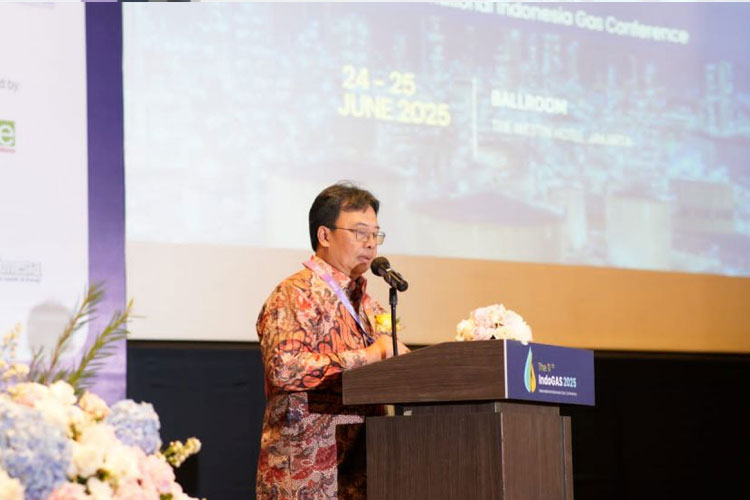Gas and Renewable Energy: Strategic Duet Towards Net Zero and Energy Independence as Future Solutions

TIMESINDONESIA, JAKARTA – With flexibility, speed of implementation, and support for low-carbon technology, natural gas has proven to be an important partner for renewable energy. Indonesia is in a unique position to bridge the need for clean energy while addressing the challenges of affordability and reliability in the region.
Therefore, IndoGAS 2025 is back as a biennial strategic forum to bring together leaders across government sectors, state-owned enterprises, industry players, historians, and international partners to discuss policy directions, market opportunities, and collaborative strategies towards a resilient, inclusive, and sustainable energy system. Amidst the challenges of the global energy transition, this conference is an important space to strengthen shared understanding and encourage the role of gas in the future energy system.
Advertisement
“It is crucial for us to progress faster and deeper in accelerating the decarbonization of the global energy system. According to the International Energy Agency, in 2024, 40% of the global incremental energy demand was met by natural gas, making it the number one source. At the same time, we must keep the trajectory towards reducing emissions, through actionable steps beyond mere targets, deploying all available solutions. The gas sector, along with all relevant technologies, natural gas, green gases, and innovative solutions is essential to keeping pace and accelerating this energy transition. The gas industry is part of a critical solution to a low carbon future by providing an immediately available, affordable, reliable, and cleanest fossil energy resource,” said Andreas Stegher, Vice President International Gas Union, Tuesday (26/6/2025).
Gas and Renewable Energy: Not an Option, But a Strategic Collaboration
In the global effort to encourage a cleaner energy transformation, the Asia-Pacific region including Indonesia is faced with a complex challenge: how to provide low-emission, reliable, and affordable energy. In this context, natural gas is no longer seen as an intermediate solution, but as part of the main strategy for the energy transition.
Gas is not here to compete with new and renewable energy (EBT/NRE), but to complement it. With the advantages of operational flexibility, relatively fast implementation time, and infrastructure that can be adjusted to future technologies, gas has strategic characteristics as a supporter of the national energy system that continues to transform.
Closing the Energy Gap, Maintaining Growth Acceleration
Indonesia has set a long-term target to achieve net zero emissions between 2050 and 2060. This commitment is designed to remain in line with the target of sustainable economic growth and expanding equitable energy access across all regions, including the 3T (disadvantaged, frontier, outermost) areas.
Through the 2025–2034 PLN RUPTL, the government is planning to add 69.5 GW of generating capacity. Of the total, around 61% is planned to come from renewable sources, while 15%will use gas-based generators. This composition reflects the balance between accelerating decarbonization and the need to maintain system reliability.
Currently, the renewable energy mix has reached 14.5% in 2024, a progressive achievement that shows a consistent policy direction. The target of increasing to 23% in 2025 and 31%–35% in 2030 will continue to be pursued through a combination of adaptive policies, incentives, and investment strategies.

Natural Gas: A Practical Solution, Supporting Reliability
The program to convert the use of gasoil in 41 gas-based power plants, which began in March 2025, is one concrete step that shows how gas can be used to strengthen the national energy system. With better cost efficiency and faster construction times compared to large-scale renewable energy projects, this program is able to close the supply gap, especially in areas with limited energy access. Furthermore, the new additional power plant will be built based on the availibity of the gas supply and infrastructure.
In addition, the gas infrastructure currently being built—such as FSRUs and gas pipelines—is prepared with a long-term vision, to be compatible with hydrogen and CCS technology. In other words, gas is not only part of a medium-term solution, but is also designed to support and accompany a full transition to a clean energy system.
Low Carbon Technology: The Evolution of Gas Towards Future Energy
Gas utilization is now in a transformation phase. The old narrative that equates gas with conventional fossil fuels no longer reflects the technological advances that exist today. Various countries in the region have begun to implement low-carbon technology for gas, including bio-LNG, a digital monitoring system for methane leaks, and the integration of hydrogen-ready pipes.
Indonesia is also on the same track. Presidential Regulation No. 14 of 2024 is an important legal basis for the development of cross-border carbon storage facilities. Initiatives such as the Tangguh CCUS project (BP) and the Sunda-Asri CCS Hub (Pertamina–ExxonMobil) are proof that Indonesia is not just a trend follower, but is also shaping the future of low-carbon energy.
Hybrid Model: Combining Reliability and Sustainability
The future energy transition requires an approach that is not only idealistic, but also realistic. The hybrid model—which combines gas generation, renewable energy such as solar power plants, and battery storage—has been adopted in various countries as a solution for a resilient, adaptive, and sustainable energy system.
Indonesia has adopted this approach through various strategic projects such as the Jawa Satu FSRU, the dedieselizaton program, gasification program, and the battery integration plan in the renewable energy system. This strategy was born from an understanding of national geographic and socio-economic conditions, so that it can create an inclusive energy system based on energy justice.
Regional Collaboration: Towards a Just and Inclusive Transition
As a country with a strategic position in the region, Indonesia also encourages a collaborative approach in the energy transition. Through synergies between gas and renewables, the Asia-Pacific region has a great opportunity to accelerate the achievement of net-zero targets, without sacrificing supply reliability or affordability.
This invitation is not only about technology, but also about trust, learning run together, and the spirit of building an energy future that leaves no one behind.
“National energy needs cannot be postponed, while the transition to renewable energy cannot be accelerated without a strong foundation. Amidst industrial growth, surging electricity demand, and commitment to net zero targets, gas is the only energy that can meet short-term needs while supporting long-term sustainability. The challenge is not only in supply, but in how we build infrastructure, connect reserves in remote areas to demand centers, and create a policy ecosystem that allows gas to play its maximum role in the journey to net zero,” said Aris Mulya Azof, Chairman of the Indonesia Gas Society
This is where IndoGAS 2025 plays a central role: as a strategic forum to bring together stakeholders across sectors, strengthening the narrative that gas is an inseparable pillar of the transition. Amid the urgency of achieving decarbonization in a fair and realistic manner, IndoGAS 2025 is a space to expand collaboration, accelerate the adoption of low-carbon technologies, and make gas the foundation of energy transformation that is relevant for Indonesia and the region. (*)
**) Ikuti berita terbaru TIMES Indonesia di Google News klik link ini dan jangan lupa di follow.
| Editor | : Ahmad Nuril Fahmi |
| Publisher | : Rochmat Shobirin |

